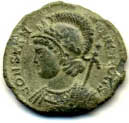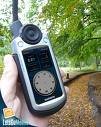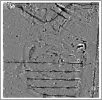Download the reports | Print this page
Summary page 1 page 2 | page 3 | Back to LHG Main Page
Wrawby Local History Group Archaeology Project
After our book was published for the Millennium, Wrawby Local History Group looked for a new project to take the group forward. Although a very small group, we were lucky enough to have amongst our number, a member who has a roman site on his land and a suggestion was put forward to investigate this site further. This was a completely different direction for us, as previous activities had always been centred around desktop research gathered from Lincoln Archives, Libraries, Newspapers and local contributors relating mostly to 18th and 19th Century Wrawby. More recently though, we have researched village life in the early 20th Century up to the beginning of the second World War, a project still awaiting completion.
One of our group had previously done some field walking, most of us were complete novices but eager to try something new, so we initially agreed to field walk the site. Enthusiasm then took over as we found a great deal of roman tile and our archaeology project was born.
|
Scunthorpe Museum have been a great support to us throughout, in these early days they organised an identification workshop for us run by Kevin Leahy We continued with annual field walks over the next few years, usually in September working around harvest and crop planting. Obviously as we walked more, we became more experienced "getting our eye in" and quantities of mainly Roman greyware were found and also smaller amounts of other pottery - as well as lots of tile. As time went on we found lovely rims, handles and larger pieces of cooking pots, jugs and the like, usually in greyware. The site |
Our curiosity grew as to the origins of the site, who had lived there? was it military or domestic? Added to this, aerial photographs showed definite "rings" in the fields indicating earlier, The new phase of our project stared with a field walk that September. One of the main criteria of the lottery funding, was involvement of the page 1 of 3 Next » |
© Wrawby Local History Society 2008-2009



